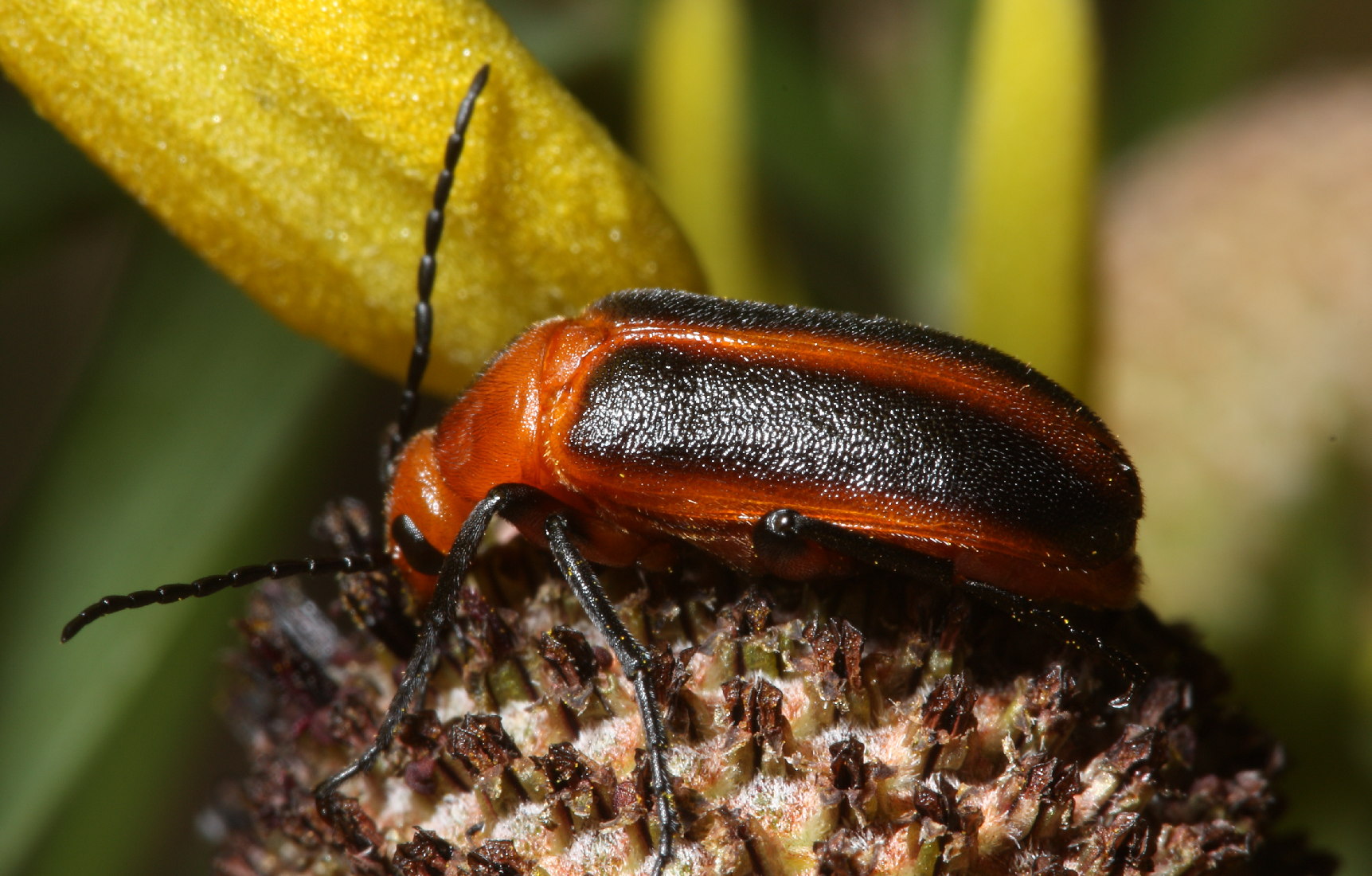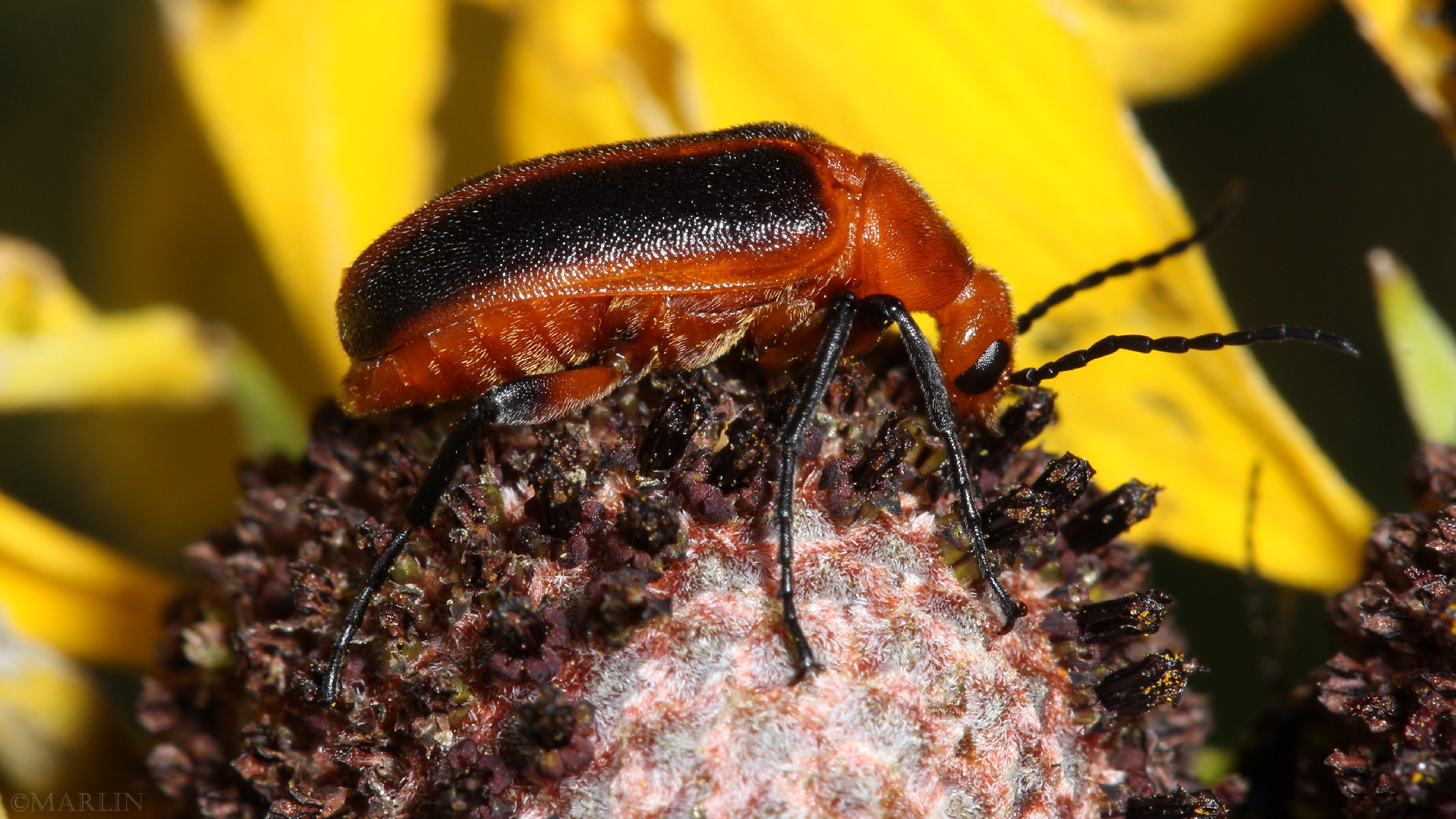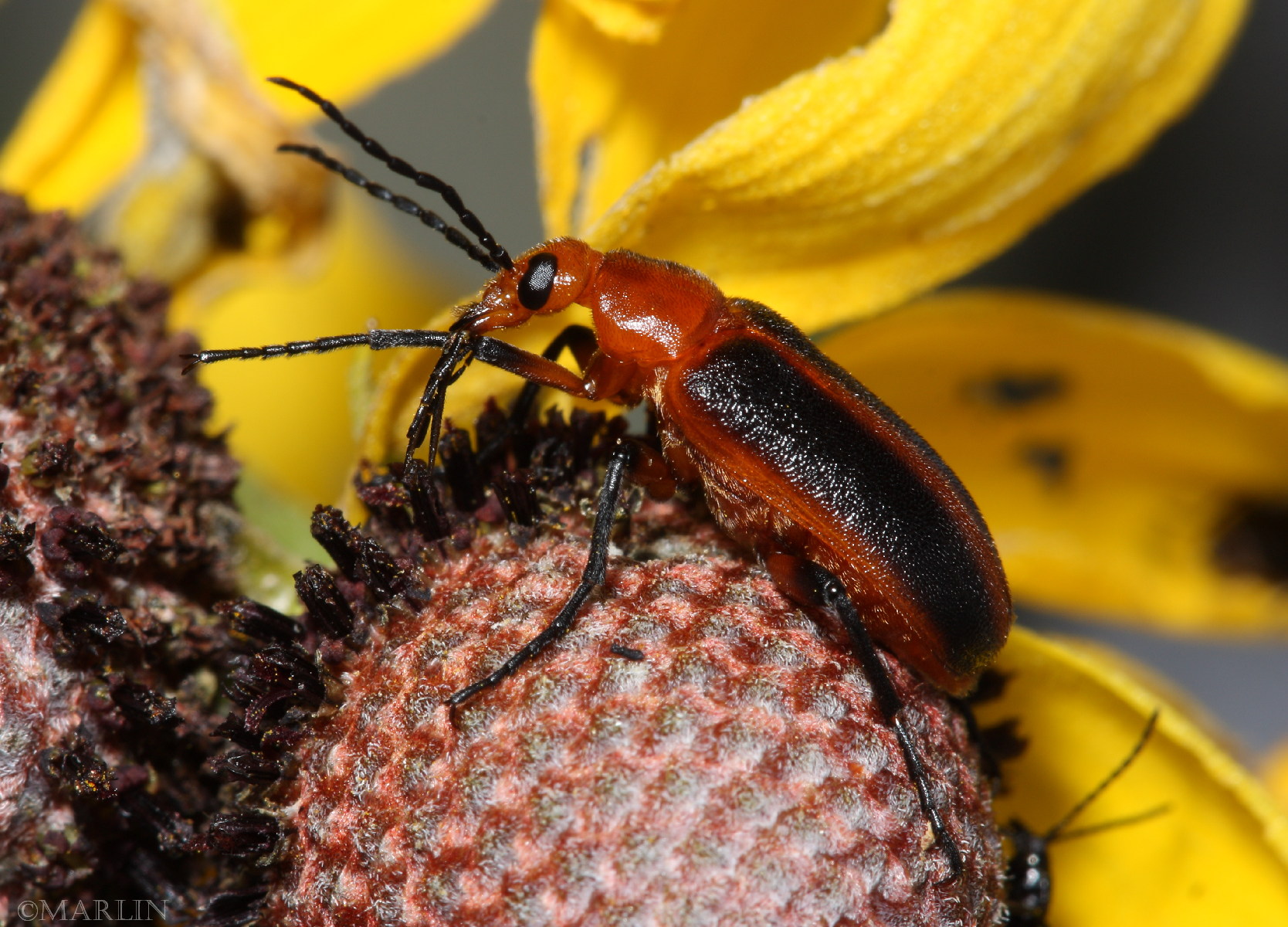Orange Blister Beetle – Zonitis vittigera
Family Meloidae – blister beetles
Live adult blister beetles photographed in the wild at DuPage County, Illinois, USA.
This is a rather atypical blister beetle. In this genus, the mouthparts are formed into a long “tongue” for nectar feeding (that’s why it looks as if there are three antennae). This beetle is nectaring on black-eyed Susan. Blister Beetle adults feed on leaves in the tops of a plant but are especially attracted to flowers where they feed on nectar and pollen. These beetles are mid to late summer insects, active in mid-July and early August.
Blister Beetles produce cantharidin, a poisonous substance comparable to cyanide and strychnine in toxicity. Stored in the insect’s blood, cantharidin is very stable and remains toxic in dead beetles. Domestic animals may be poisoned by ingesting beetles while grazing or eating harvested silage. Cantharidin can also cause severe skin inflammation and blisters.
The concentration of cantharidin in adult beetles depends primarily on the sex; males produce the chemical and only pass on small amounts to the females during mating. Cantharidin amounts also depend on species; the striped blister beetle has approximately five times more cantharidin than the black variety.
There are other insects, including some beetles, flies, bugs that eat live or dead blister beetles to obtain the protective qualities of this chemical defense; these so-called cantharidinophilous insects have acquired immunity from the chemical and remain unharmed. [2]

References
- Bugguide.net, Zonitis vittigera
- Professor E. David Morgan, Chemical Ecology Group, Lennard-Jones Laboratory School of Physical and Geographical Sciences, Keele University, Staffordshire U.K.
Beetles Index | Longhorns | Leaf Beetles | Soldier | Blister | Lady | Scarab
Tree Encyclopedia / North American Insects & Spiders is dedicated to providing family-friendly educational
resources for our friends around the world through large images and macro photographs of flora and fauna.


